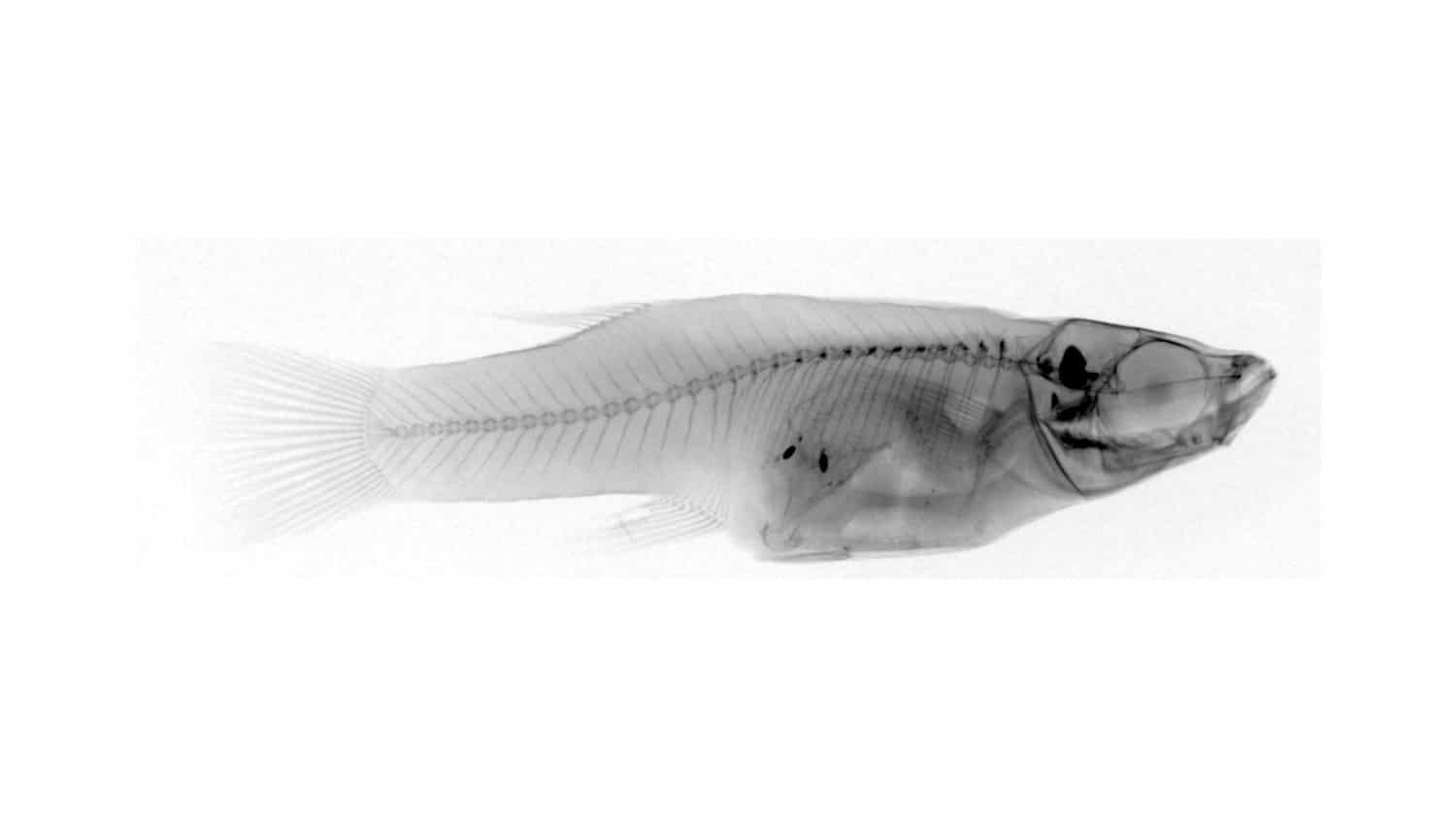Fish Cannibalism Rare in Wild, Study Finds

For Immediate Release
Mosquitofish and guppies, though known to be cannibalistic in captivity, are extremely unlikely to be cannibals in wild settings, and the rare instances of cannibalism in these fish are likely due to strong competition for food. The findings, from a new study led by U.S. and U.K. researchers, could have implications not only for fish enthusiasts and scientists who use mosquitofish as models for ecological and evolutionary studies, but could also help explain the causes and frequency of cannibalism in other animals.
Cannibalism, preying on and eating other individuals of your own species, is a peculiar behavior, featuring prominently in human mythology and fiction. But how common is it in nature, and why would organisms resort to such an extreme course of action just to get a meal?
Brian Langerhans, associate professor of biology at North Carolina State University, and Rüdiger Riesch, senior lecturer in evolutionary biology at Royal Holloway University of London, decided to find out by looking at over a decade’s worth of data gained from almost 12,000 fish across 17 species in the wild.
“These are data accumulated from several different projects over the years,” says Langerhans, the study’s senior author. “To identify the mechanisms responsible for this sort of phenomenon in the wild, we needed really large sample sizes. So, we accumulated the data for this work while also doing other projects.”
“In captivity, mosquitofish and guppies will practice cannibalism commonly enough that there are protocols in place in research labs and aquaculture to quickly separate offspring from the larger fish,” says Riesch, the corresponding author of the work. Riesch began the project while a postdoctoral researcher in Langerhans’ lab between 2010 and 2012.
“But when you look at the diets of fish in the wild, you really don’t find much evidence of it,” Riesch says. “We wanted to find out whether and why cannibalism occurs in nature.”
The research team examined the diets of 11,946 fish in the wild, using dissection or X-rays to determine what the fish had eaten. They found only 35 cases of cannibalism, in just three species of mosquitofish – less than 0.30% occurrence.
Cannibalism was most frequent in populations with very high levels of competition for food; that is, populations lacking major predators where population densities of the fish surveyed were especially high.
To experimentally test the possible causes of cannibalism, the team studied 720 additional fish by creating “mesocosms,” large (6 feet in diameter) outdoor containers that recreated the fish’s natural environment but allowed researchers to control elements such as population density, predation risk and resource availability. The fish within were observed for a week to determine what might influence cannibalistic behaviors. The results of these experiments also pointed to population density and resource availability as the key drivers of cannibalism.
“Resource competition seems to be the main predictor of cannibalism,” Langerhans says. “We also saw that a lack of predation has an indirect effect on cannibalism: Release from predation allows population density to skyrocket, which decreases resources. This same driving factor may be responsible for many cases of cannibalism across the animal kingdom in natural settings.”
The team was also able to rule out some potential causes for cannibalism.
“Cannibalism doesn’t happen when bigger fish more frequently encounter smaller fish,” Langerhans says. “Also, it wasn’t simply large body size that explained which individuals cannibalized – females, who are larger, cannibalized a lot more than males, but it seems more related to their greater energetic requirements for bearing live young than their actual size.”
The work has implications not only for hobbyists or those trying to save and repopulate endangered species, but also for researchers who work in evolutionary biology and employ mosquitofish as an animal model.
“Cannibalism in these fish is an issue that biologists have to regularly contend with in lab and hatchery settings, so it was widely thought to be at least somewhat common in nature,” Langerhans says. “But we’ve shown here that it really isn’t.
“These fish are used as models for evolutionary work – quantifying how traits evolve – in labs. Now that we know cannibalism isn’t a common behavior in the wild, we know that unnatural rates of cannibalism could alter traits in the lab setting in ways that affect study results and implications, especially in studies about behavioral evolution.”
The work appears in Ecology and Evolution, and is supported by the National Science Foundation (grants DEB 0722480 and 0842364) and the Environmental Protection Agency (STAR Fellowship 91644501).
-peake-
Note to editors: An abstract follows.
“Resource competition explains rare cannibalism in the wild in livebearing fishes”
DOI: 10.1002/ece3.8872
Authors: Rüdiger Riesch, Laura Pennafort, Darlene Lucion, Sara Pirroni, Royal Holloway University of London; Márcio S. Araújo, Universidade Estadual Paulista (UNESP), Rio Claro, Brazil; Stuart Bumgarner, Caitlynn Filla, Taylor R. Goins, R. Brian Langerhans, North Carolina State University; Amber M. Makowicz, Florida State University; Ryan A. Martin, Case Western Reserve University
Published: Online May 16, 2022 in Ecology and Evolution
Abstract:
Cannibalism, the act of preying on and consuming a conspecific, is taxonomically widespread, and putatively important in the wild, particularly in teleost fishes. Nonetheless, most studies of cannibalism in fishes have been performed in the laboratory. Here, we test four predictions for the evolution of cannibalism by conducting one of the largest assessments of cannibalism in the wild to date coupled with a mesocosm experiment. Focusing on mosquitofishes and guppies, we examined 17 species (11,946 individuals) across 189 populations in the wild, spanning both native and invasive ranges and including disparate types of habitats. We found cannibalism to be quite rare in the wild: most populations and species showed no evidence of cannibalism, and the prevalence of cannibalism was typically less than 5% within populations when it occurred. Most victims were juveniles (94%; only half of these appeared to have been newborn offspring), with the remaining 6% of victims being adult males. Females exhibited more cannibalism than males, but this was only partially explained by their larger body size, suggesting greater energetic requirements of reproduction likely play a role as well. We found no evidence that dispersal-limited environments had a lower prevalence of cannibalism, but prevalence was greater in populations with higher conspecific densities, suggesting that more intense resource competition drives cannibalistic behavior. Supporting this conclusion, our mesocosm experiment revealed that cannibalism prevalence increased with higher conspecific density and lower resource levels but was not associated with juvenile density or strongly influenced by predation risk. We suggest that cannibalism in livebearing fishes is rare in the wild because preying on conspecifics is energetically costly and only becomes worth the effort when competition for other food is intense. Due to the artificially reduced cost of capturing conspecifics within confined spaces, cannibalism in captive settings can be much more frequent.
- Categories:


